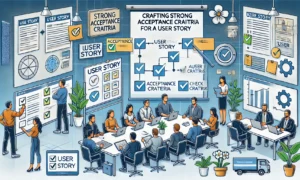The digital landscape has undergone a paradigm shift with the emergence of no-code and low-code platforms, offering unprecedented opportunities for businesses to accelerate product development. These tools are not just a boon for startups and small businesses with limited technical resources; they are also becoming essential for large enterprises seeking agility in their workflows. However, while the opportunities are vast, scaling no-code solutions comes with its own set of challenges.
Democratizing Product Design and Testing
No-code and low-code platforms like Bubble, Airtable, Webflow, and OutSystems empower non-technical stakeholders to bring their ideas to life. By removing the need for advanced coding skills, these platforms democratize product development, enabling teams to:
- Accelerate Prototyping:
Teams can quickly create prototypes to test concepts without waiting for developer bandwidth. This agility is crucial in validating ideas before investing heavily in development. - Enhance Collaboration:
No-code tools bridge the gap between technical and non-technical teams. Product managers, designers, and marketers can directly contribute to building and refining applications, fostering a more collaborative environment. - Reduce Costs:
For startups, hiring developers can be a significant expense. No-code platforms provide an affordable alternative to build minimum viable products (MVPs) or automate workflows, allowing businesses to allocate resources strategically. - Encourage Experimentation:
With a low barrier to entry, teams are more likely to experiment with new ideas, iterating quickly based on feedback. This fosters innovation and reduces the risks of pursuing unvalidated concepts.
Real-Life Success Stories
- Glide Apps enabled a healthcare startup to build an appointment scheduling app in weeks, not months, allowing them to respond quickly to the surge in demand during the pandemic.
- Webflow helped a design agency launch a client’s e-commerce website in record time, providing them with the ability to make real-time updates without relying on a developer.
Pitfalls to Avoid When Scaling No-Code Solutions
While no-code platforms are transformative, businesses must tread carefully when scaling these solutions. Here are the key challenges to consider:
- Limited Customization and Scalability:
No-code tools often lack the flexibility to handle highly complex or bespoke requirements. As user bases grow, performance bottlenecks or feature limitations can emerge.
Solution: Plan for a migration strategy to custom-coded solutions as the product scales. Start with no-code for MVPs but design with scalability in mind. - Vendor Lock-In:
Many platforms tie users to proprietary technologies, making it difficult to switch to another tool or migrate data.
Solution: Choose platforms with robust APIs and export functionalities. Maintain documentation of workflows and data architecture to ease future transitions. - Security and Compliance Risks:
No-code solutions may not always meet stringent compliance standards, especially for industries like healthcare and finance.
Solution: Evaluate the platform’s security protocols and ensure they align with your industry requirements. For sensitive applications, consider hybrid approaches combining no-code tools with custom solutions. - Over-Reliance on Non-Technical Teams:
While empowering non-technical teams is a strength, over-reliance can lead to fragmented or poorly designed systems.
Solution: Foster collaboration between no-code users and IT teams to ensure technical oversight and maintain system integrity. - Underestimating Maintenance Needs:
Even no-code solutions require regular updates and troubleshooting, which can strain resources if underestimated.
Solution: Train dedicated team members to manage no-code tools and integrate regular audits into workflows.
Opportunities for the Future
The rise of no-code platforms signals a broader shift in how businesses approach innovation. These tools have the potential to:
- Democratize Entrepreneurship: Aspiring entrepreneurs with minimal resources can turn their ideas into viable businesses.
- Transform Education: Educational institutions are incorporating no-code tools into curriculums, teaching students to build digital solutions without needing deep technical knowledge.
- Empower Enterprise Teams: Large organizations can leverage no-code platforms to create internal tools, automate repetitive tasks, and innovate faster.
Final Thoughts
No-code and low-code platforms are reshaping the way products are designed, built, and tested. While they offer significant advantages in terms of speed, cost, and accessibility, businesses must approach them with a clear strategy to avoid scalability pitfalls. By combining the agility of no-code with a thoughtful roadmap for growth, organizations can unlock innovation at unprecedented levels.
Are you leveraging no-code or low-code platforms in your product development journey? Share your experiences in the comments!



